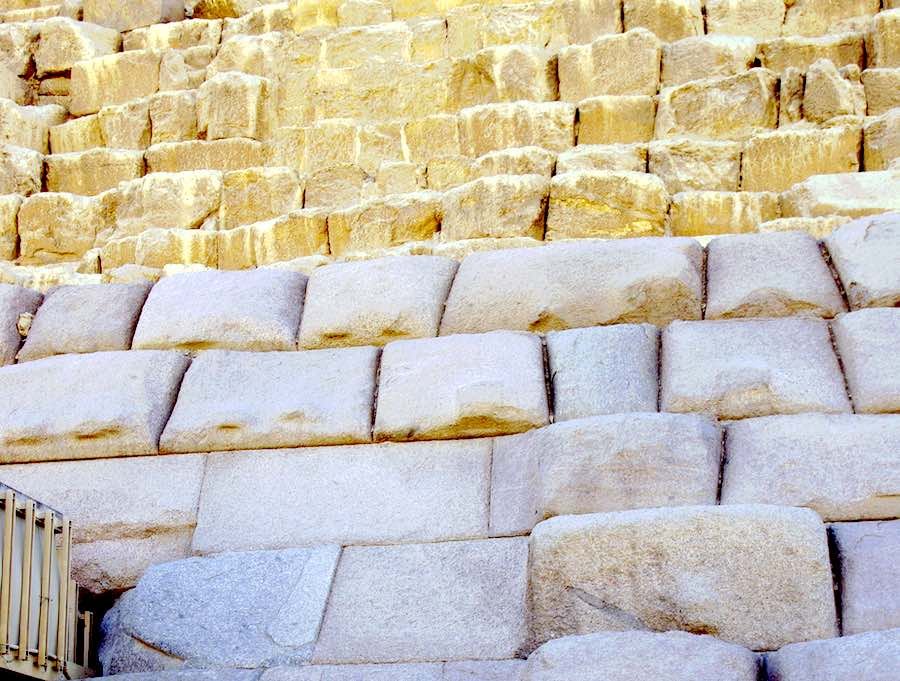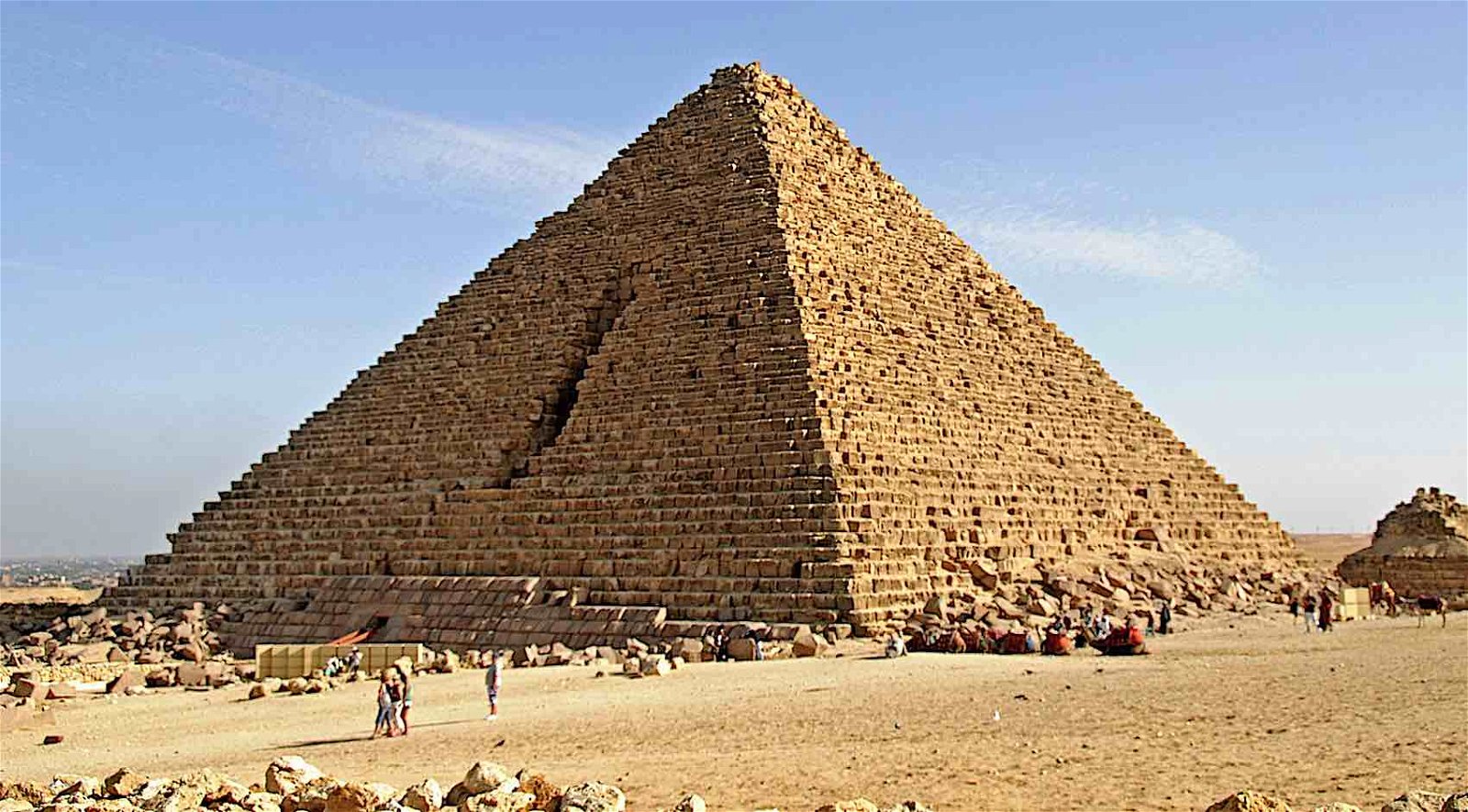A contentious restoration effort that aimed to replace ancient granite on one of Egypt’s three famous pyramids at Giza, previously dubbed the “project of the century,” has been canceled according to Egyptian authorities.
The Pyramid of Menkaure, the smallest of the three pyramids at Giza, reaches a height today of around 200 feet. Although at the time of its completion, it is believed to have reached 215 feet in height, with an exterior casing of red granite and the uppermost portion capped using Tura limestone.
Earlier this year, an ambitious effort to reinstall hundreds of the granite blocks that once formed its outer casing was announced, work that would be undertaken by an Egyptian-Japanese archaeological collaboration, according to a statement issued by Egypt’s secretary general of the Supreme Council of Antiquities, Mostafa Waziri.
The controversial effort resulted in mixed views among Egyptians, as well as the international archaeological community, and ultimately resulted in a review of the proposal by Egypt’s antiquities project.
Now, the Menkaure Pyramid Review Committee, headed by former Egyptian antiquities minister Zahi Hawass and appointed to review the project, “has unanimously objected to the reinstallation of the granite casing blocks,” according to a statement issued last week.


The casing stone to have been used in the project has remained scattered along the base of the pyramid for thousands of years, following an abrupt end brought to the outer construction phase that is believed to have coincided with the death of Menkaure, which Egyptologists believe happened around 2503 B.C.
Hawass said true restoration of the pyramid would be impossible, given that the project was never completed in antiquity and that attempting to do so today would require cement that would potentially damage the pyramid.
The pyramids have outlived all the other famous constructions of antiquity to have been grouped among the famous Seven Wonders of the Ancient World. Giza’s Great Pyramid is the sole remaining example to have survived into modern times, and the oldest of all the ancient wonders.
The other wonders to have traditionally made lists in antiquity included the Lighthouse of Alexandria, the Mausoleum at Halicarnassus, the Temple of Artemis, Babylon’s famous Hanging Gardens, a massive statue of Zeus at Olympia, and the famous Colossus of Rhodes, all of which are known today from writings that date back to as early as the 2nd century B.C.
Although the pyramids managed to outlive most other ancient structures of comparable magnitude and significance, they have still suffered their share of challenges over the millennia. The combined centuries of weathering have contributed to structural issues, and all the pyramids have been the targets of theft by looters.
In at least a few instances, the pyramids have also sustained damage by Egyptologists in the past. During explorations of the Great Pyramid in the late 1830s, Major General Richard Howard Vyse infamously used gunpowder to explore portions of the Great Pyramid. Although destructive, Vyse’s methods did lead to the discovery of several chambers within the pyramid.
In a statement provided to Reuters last week, Hawass said the pyramids were perfectly safe in their current state, although he said many people had written to him with their concerns about the restoration plan.
“Don’t be worried at all, the pyramids are safe,” Hawass said.
Micah Hanks is the Editor-in-Chief and Co-Founder of The Debrief. He can be reached by email at micah@thedebrief.org. Follow his work at micahhanks.com and on X: @MicahHanks.

